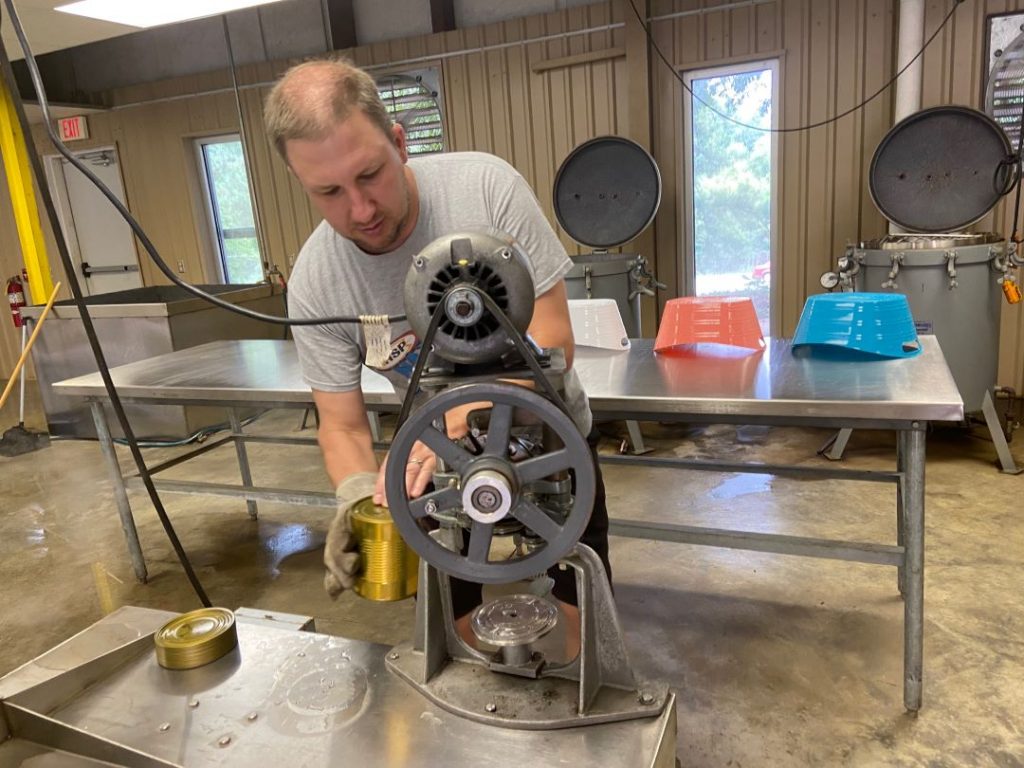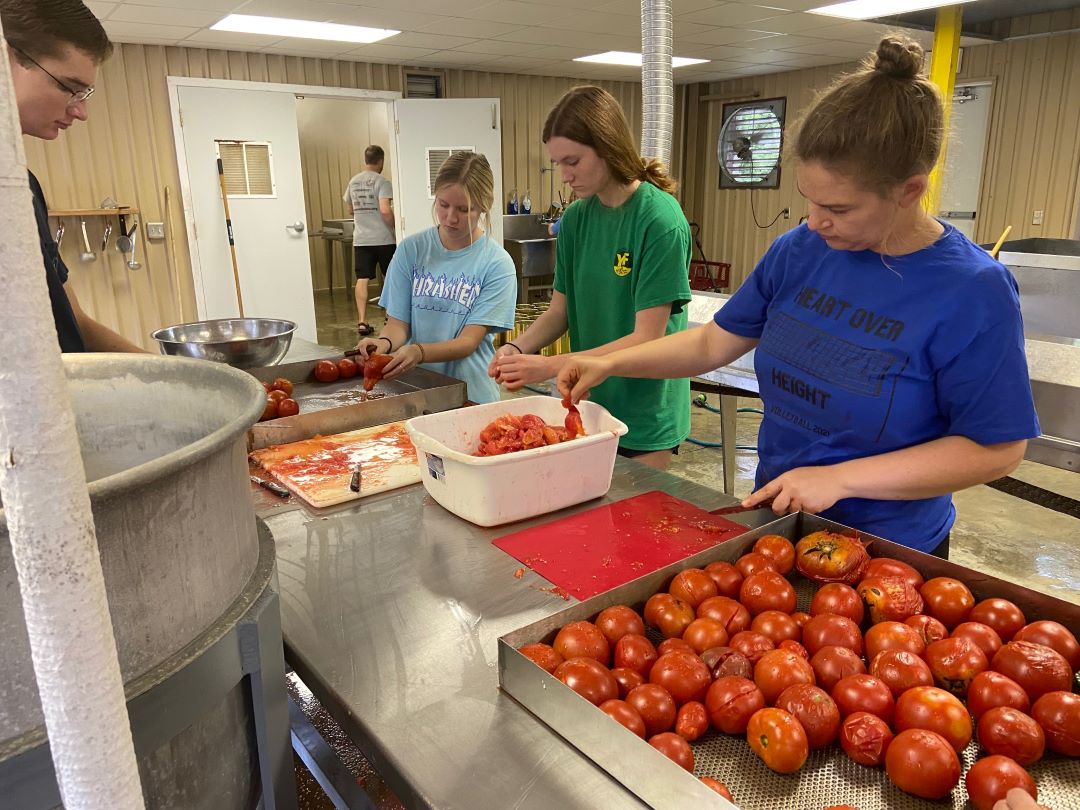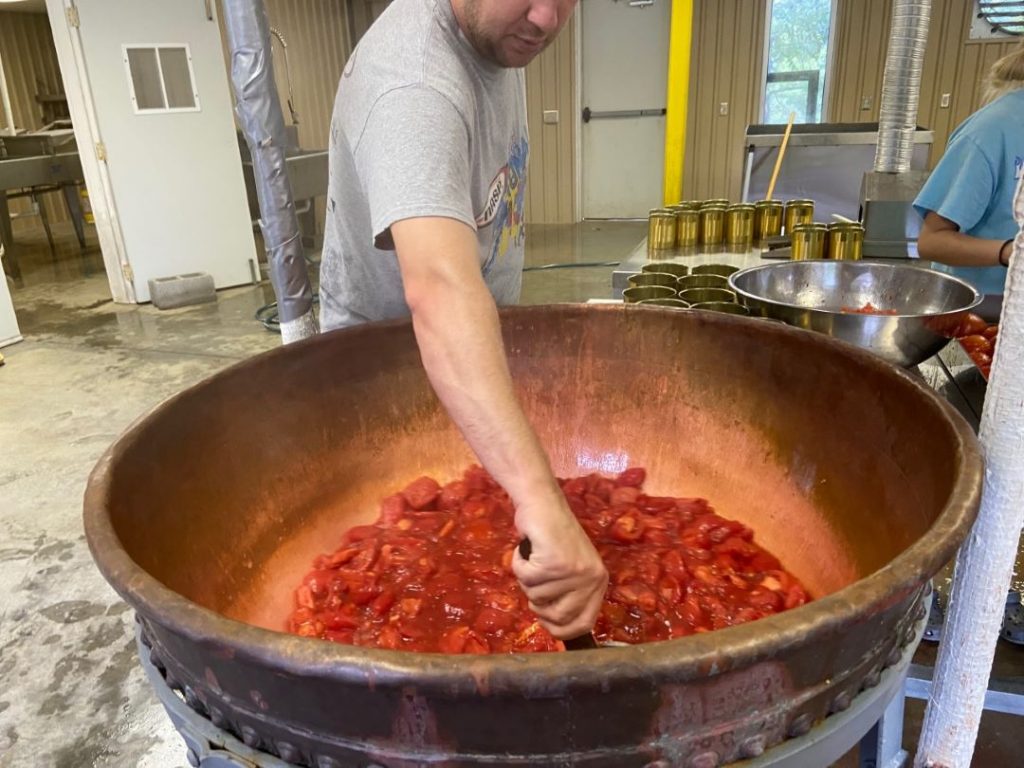Students at the Thomson High School Community Cannery have seen lots of tomatoes this season.
“With all the rain, people have had good tomato crops,” said Rick Dubose, who teaches agriculture at Thomson High School and oversees the cannery. “The rain has been the best thing for the tomatoes.”
MORE: Olde Town Community Garden Sees Successes
The cannery operates about six weeks out of the year in June and parts of July with students from Thomson McDuffie Middle School and Thomson High School helping area growers with their fresh produce.
Located next to the McDuffie County Animal Shelter on White Oak Road, the cannery has been in operation since the 1930s. Its current building was constructed in 2003.
It’s one of 30 canneries in Georgia connected to a school program, he said. The next closest one is in Emmanuel County.

Rick Dubose seals a can of tomatoes July 21 at the Thomson High School Community Cannery. Staff photo by Charmain Z. Brackett 
Rick Dubose, the agriculture teacher at Thomson High School, stirs 20 pounds of tomatoes canned at the high school’s cannery July 21. Staff photo by Charmain Z. Brackett
“Canning is a lost art,” said Dubose, who partners with Caroline Williams, the agriculture instructor and FFA adviser at Thomson McDuffie Middle School, to teach the basics of canning and preserving.
Hayden McCord, a recent Thomson High School graduate, has spent several summers canning produce.
“It lets me do something I wouldn’t be doing otherwise,” said McCord, who heads to the University of Georgia in a few weeks.
[adrotate banner=”54″]
The FFA program has been a big part of his life. He’s competed in several FFA agriscience fairs and will head to the national competition in October after winning the state competition earlier this year.
McCord explained the steps to canning vegetables.
Produce that comes to the cannery goes through a steam process. Preventing foodborne illness is important. Different types of food require different heating times. Tomatoes are blanched, peeled, cored and cooked before they are put into cans. The can goes through a steam conveyor to maintain the inside temperature before the lids are pressed onto them. Once they’re sealed in the can, the can goes into a steam bath — 55 minutes for tomatoes.

Some items don’t go into cans; corn is blanched and then sealed in bags to be frozen.
“They’d explode like popcorn” if put into cans, Dubose said.
Okra is another vegetable that doesn’t do well in the process.
“Okra gets slimy,” he said.
Okra is best stored in a freezer.
In addition to the canning process, the cannery is also outfitted with a pea sheller, which can shell the items in a fraction of the time it takes by hand, he said.
The cannery charges a small fee per can. With the tomatoes, it’s 75 cents per can. Nothing is added to the vegetables — not even salt. It’s strictly the produce.
Photojournalism: Jessye Norman Community Art Garden
Since the cannery isn’t located on school grounds, Dubose rarely uses it during the school year. He said he got a donation of peanuts one fall, and his students made boiled peanuts on the site.
With school heading back in session, the cannery closes for the season July 22.
Charmain Z. Brackett is the Features Editor for The Augusta Press. Reach her at charmain@theaugustapress.com.
[adrotate banner=”56″]













